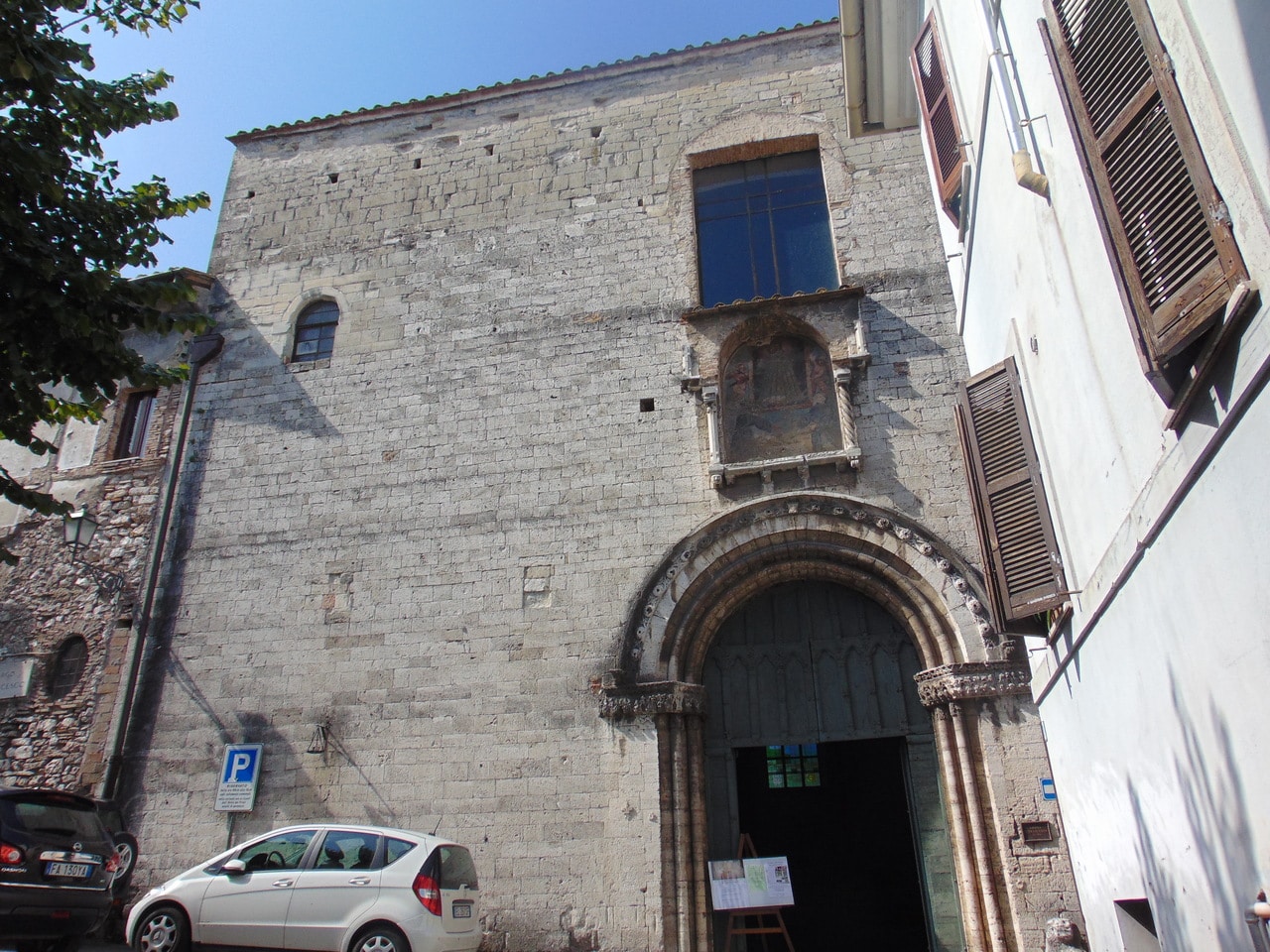The Church of San Francesco is one of the most important monuments of the Umbrian city of Narni. Located in one of the highest points of the village, the church is an extraordinary example of late medieval Romanesque architecture, which is distinguished by its typical characteristics of Abruzzo and Lazio.
The facade of the church has a portal of the fourteenth century concentric arches and is embellished with a window that replaces the original rose window, tampered in the seventeenth century. The interior of the church has three naves divided by cylindrical pillars surmounted by sculpted capitals, on which stand round arches.
The nave is covered by a trussed roof and ends with a large polygonal apse, punctuated inside by ribs that do not reach the floor but stop on the wall, ending in an inverted cone according to a procedure more common to Cistercian architecture than to Franciscan. On the sides of the aisles there are five chapels per part, which multiply the interior space of the church.
The polygonal apse is covered with a Gothic sail vault that recalls that of the cathedral. At the end of the building there is a large three-hour window with a stained glass window divided into two parts: the upper one depicts St. Francis with the Franciscan protomartyrs, the lower one depicts Lo Speco di Narni, St. Juvenal and Piazza dei Priori.
The Church of San Francesco is rich in frescoes of the fourteenth, fifteenth and sixteenth centuries, placed both on the pillars and in the chapels, whose characteristics are typical of the pictorial tradition of Narni. Among the most interesting frescoes are those in the sacristy, painted by Alessandro Torresani, depicting scenes of the Annunciation, the Adoration of the Magi, the Wedding of Cana and the Redeemer.



